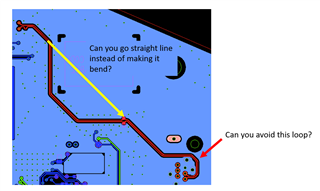SI simulation engineer states that the only way to reduce insertion losses is to reduce the length trace from Connector to RIN+-, and use a different ESD Protection diode.
Currently we reduced from 80mm to 63mm but we still seeing the problem, could you recommend any other advice to improve?







